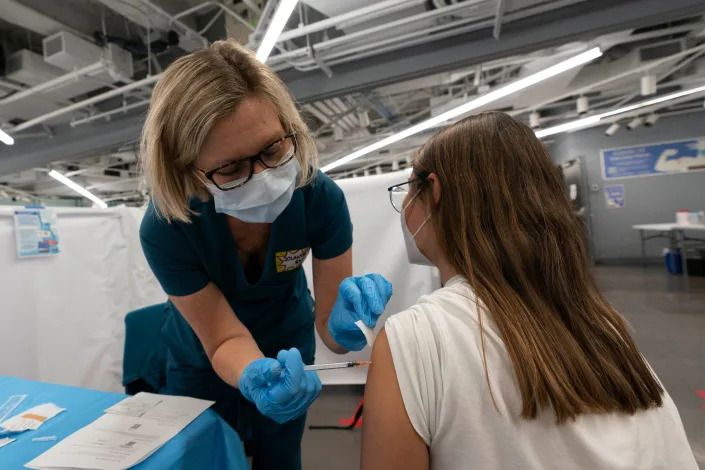
Liz Carey
Fri, January 21, 2022, 6:52 AM·4 min read
For several months now, we’ve been hearing from businesses and corporations that no one wants to work.
In fact, I’ve heard some people say: “There are plenty of good jobs out there making more than $15 an hour. If people aren’t taking them, it’s because they can make more at home on government hand-outs.”
I beg to differ. I’m beginning to think it’s not the workers who are at fault here.
I’ve watched over the past few months as my son works to get a better paying entry-level job. It has been eye-opening.
He’s in college part-time, and wants to work full-time so he can get an apartment on his own. He had a job, but it was only part-time and barely covered his bills — car, cell phone, insurance, et al. Before he set out to find another job, he crunched the numbers.
The average cost of a one-bedroom apartment in Lexington is around $650. Adding in utilities, car, insurance, cell phone, internet access, groceries, and other necessities, his monthly budget comes to about $2,000. In order to make ends meet, he needed a job paying $17 an hour.
First he looked for jobs making $18 to $21 an hour. A national delivery firm posted that it was hiring thousands of people for $21 an hour. When he looked into it further, the $21 an hour job was only for third shift, and only after you started working full-time, which could take a year or more to get to. In fact, few of the positions they were filling were full-time and none of them paid the $21 an hour advertised. Currently, the same company has seven positions open in Lexington. All but two are part-time.
For a month, my son put in at least two applications a day for entry-level jobs – 47 applications in all. Of the eight responses he got back, three said the job was part-time and at a lower rate than they advertised. Two companies said he’d be working as an independent contractor. And one said he’d be paid by the job when they had work for him to do, but that it would work out to an hourly rate in the end.
Even highly qualified candidates are saying they’re struggling to find jobs in an economy where businesses are screaming that they can’t get anyone to work for them.
In September, Tim Glaza, an Eagle Scout and college graduate with a degree in operations and supply-chain management told Business Insider that his numerous applications to positions in his field had received no response, despite companies saying they were desperate for employees.
In fact, when hiring platform Indeed polled job seekers last year, it found that 77 percent got no response from any of the companies they applied to.
When my son did get positions through networking, he found he didn’t get what he was promised. In one instance, he was told he would get paid more than the job he was leaving. When he got his paycheck, it was for less than he had previously made. When he approached his boss about it, he was told “We’re barely making it. We can’t afford to pay you more.”
At another position, he was promised $2 more an hour, but then shifted to a different position after he started work, where they paid him less, and at part-time hours.
And it’s not just him. I’ve heard from others who say they were promised one hourly rate and paid another. And I work with one woman who said she was offered positions, but all of them were part-time. In order to manage her child care needs and pay the bills, she opted to start her own business instead.
The economy is not what it was in 2019, I get that. Companies are struggling right now, I get that too. And I understand that the supply chain issues are driving up costs for companies as well.
But at the same time, corporations posted RECORD profits in 2021. According to the U.S. Bureau of Economic Analysis, profits in the U.S. rose 3.4 percent to a record high of $2.52 trillion in the third quarter of 2021. Analysts attribute the profits to a rebounding economy, and on the government subsidies given to businesses as part of relief efforts.
“No one wants to work”, but companies aren’t talking to people who want jobs.
“We can’t afford to pay you what you want/need to live”, but companies are making record profits.
“The government subsidies are making people not want to work”, but companies are making record profits because of government subsidies.
I’m beginning to think that maybe it’s not the workers who are at fault here.

Liz Carey is an author, freelance reporter and writing instructor living in Lexington, Ky.













